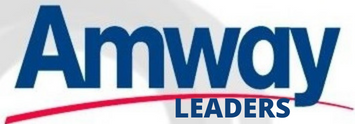If you've been following the big Amway debate, you've probably noticed that the "pro Amway" arguments are lots of anecdotes and best-case scenario scenarios, or they show off a guy who reportedly made millions in the Amway business. Because even an MLM scam must have some success stories in order to be successful, else you would not be able to recruit enough people to keep the scheme going. But, in the end, even the most ardent critics of Amway concede that the company has achieved considerable success. They primarily assert that the achievement of a few comes at the price of the majority of people. What the pro-Amway arguments never include are rational and realistic answers, even mathematical ones, for how more than a small fraction of people may reasonably be expected to succeed in their endeavours.
Recruits are shown reproductions of large checks, as well as photos of mansions and the newest sports automobiles, among other things. They are supposed to be examples of what can be accomplished with a part-time commitment. Everyone, according to legend, can achieve success. Anyone may join, work hard, and heed the advise of their upline, and they will almost certainly succeed. If you don't succeed, it's usually because you didn't put in enough effort or didn't do things "exactly right." However, the business is touted as "easy" or "duplicatable" (i.e., it can be copied) and that "anyone" may start one. It is possible for "anyone" to do it, just as everyone can win the lottery. What they never mention is that "everyone" is capable of doing the task. Even if you don't make a lot of money in your profession, everyone who puts in some effort will receive a paycheck and make a profit.
In Amway, the vast majority of people (including those who work extremely hard) either make nothing or lose money. It is a product of the multilevel marketing system. Amway's typical 6-4-2 model displays a total of 79 independent business owners (IBOs). One IBO is a platinum, whilst the rest are not, and vice versa. The proposal also assumes that ALL IBOs performed well enough to be eligible for a bonus. In actuality, a platinum would most certainly have a lot larger downline than 100 people. Some people do little or nothing, while others put in a lot of effort. As a result, there are a few big winners and a large number of others who either make nothing or incur losses.
Despite this, not a single Amway defender has provided a realistic explanation of how someone may run the business and genuinely make money to this day. Even if they claim to have gathered 20 consumers who each spend $25 per month, not a single IBO has proved that they have amassed that kind of customer base in my years of experience. Furthermore, Amway items are so outrageously pricey that a large number of clients appears unrealistic to begin with. Most purchases are made by sympathetic friends and family members, or at least that is my understanding (and experience) of the situation.
So, while the argument continues, the critics back up their claims with mathematical evidence. For example, the average monthly income of all Amway distributors is approximately $100, and if you exclude "inactive" distributors, the average monthly income is approximately $200. Take into consideration the following scenario: how can you establish a residual income empire with a downline in which approximately half of the IBOs are "inactive" and the "average" income of the "active" IBOs is approximately $200 per month? Diamonds and royal ambassadors are included in the $200 average price tag. Consider this food for thought. Because of their larger revenues, diamonds have a tendency to distort averages. The majority of IBOs who get a bonus move 100 PV, which qualifies them for a bonus of approximately $10. That is the most likely outcome for the majority of IBOs who give the firm a serious shot. What isn't mentioned is that making $10 a month while spending hundreds of dollars on CDs, functions, and books is hardly a profitable business model.
Even at my highest PV level of 4000, I was only breaking even when the average cost of the Amway tools was taken into consideration. So, what is the inevitability of the outcome for the remaining participants who never achieve 4000 PV? The answer is in the form of business losses. As of this writing, I have not received a logocal response explaining why I am incorrect.



0 comments: